tude of excited Jollibee patrons waiting to get their hands on their Jollibee favorites, but also first-timers waiting to have their own Jollibee experience," said Jose Miñana, Jollibee Foods Corporation's Group President for North America. "There's no greater joy for us than serving the needs and tastes of Jollibee fans in the community. At Jollibee, we aim to bring families together for happy moments over great tasting food with superior value, served with warm and friendly service –our own brand of joy." The brand has become a symbol of nostalgia and warm childhood memories for many overseas Filipinos in the U.S. To many, Jollibee is the go-to restaurant of Filipinos for both special get to try Jollibee's signature menu items such as the world famous Chickenjoy. This dish is delicately breaded to be crispylicious on the outside and juicylicious inside. The well-loved Jolly Spaghetti is a favorite of both kids and kids-at-heart because of its signature sweetstyle sauce, loaded with chunky slices of savory ham, ground meat, and hotdog. Other classic menufavorites include the juicy and cheesy Jolly Hotdog, and the Peach Mango Pie, which is made with real Philippine sweet mangoes and a flaky golden brown crust.
largest Asian restaurant company, is now open in Jacksonville. This is the 36th store in the US, as well as the first in the state and Southeast US. It opened to the public on March 18, 2017. Jacksonville is the most populous city in the Sunshine State, as well as home to the largest FilipinoAmerican community in Florida. The longawaited arrival of Jollibee in the city has
See

Pets YOUR HEALTH EDITION
DEBUNKED!
Common Misconceptions About Service Animals


DEFEAT THE DANDER Understanding Pet Allergies
POP QUIZ! Test Your Knowledge Of Endometriosis
THE POWER SLEEP HAS ON MENTAL HEALTH
CentralFloridaHealthNews.com ENROLL PAGE 12 THE ENDORSED PUBLICATION OF THE POLK COUNTY MEDICAL ASSOCIATION
ONE! PRSRT STD US POSTAGE PAID WEST PALM BEACH,FL PERMIT NO. 4595
volume JOLLIBEE page 15
11 | issue 12 | march 2022 FREE — TAKE
MORE THAN JUST MAN’S BEST FRIEND Sniffing Out Changes In Blood Sugar
Roan Cadavona, ARNP FNP-C Nurse Practitioner
Ritu Aparajita, Vascular Surgeon MD RPVI
Kollagunta Chandrasekhar, MD, FACC Cardiologist

Meet Your Providers…

• Executive Director the Heart Function Clinic, Low Risk Chest Pain Center and the Cardiac Rehabilitation Program for BayCare Winter Haven Hospital



• President of Medical Staff for BayCare Winter Haven Hospital
• Chairman of Cardiology for Lake Wales Medical Center
• Clinical Associate Professor, FSU College of Medicine
Ritu Aparajita, MD, RPVI
A Vascular and Endovascular Surgeon who earned her MBBS at University of Delhi, India. She then completed a research fellowship at Columbia University Medical Center and a residency in general surgery at Staten Island University Hospital in New York, she completed her fellowship training in Vascular Surgery at Newark Beth Israel Medical Center and St. Barnabas Medical Center in New Jersey. She’s co-authored more than two dozen journal articles. She was recently nominated for the American Medical Association Inspiration Award that recognizes physicians who have contributed to the achievements of women in the medical profession.
Roan Cadavona, ARNP, FNP-C
…brings a high level of education and experience in Cardiac Catheterization, Electrophysiology and working in the Cardiovascular Progressive Care unit. He serves a vital role in providing patients with optimal cardiovascular care through counselling and screening, as well as disease prevention and management strategies.
• Board certified Family Nurse Practitioner

• Member of Staff for BayCare Winter Haven Hospital
8 9 11 14
On the Cover
Maguire Schmid’s diabetic alert dog Cadence is specially trained to detect high and low blood sugar. Most of the time, she is even able to sense dangerous levels before a continuous glucose monitor alerts Schmid, who has type 1 diabetes. Read more, page 10
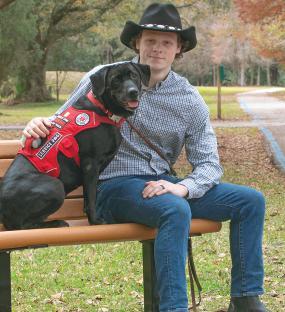
Pop Quiz!
that the classic restaurant style ever disappeared, but a renewal of the model is taking place in response to new sources of beef and new flavorful expressions of the concept that get chefs and diners excited," says David Sprinkle, research director, Packaged Facts. Today's steakhouse menus increasingly feature grass-fed cattle, locally raised animals, heritage varieties, meat butchered and dry aged in-house, and dishes that stem from the whole animal, not just the premium cuts. And that's just the meat. Creative side dishes in lieu of old standards, global
photo by MICHAEL WILSON
delicately breaded to be crispylicious on the outside and juicylicious inside. The well-loved Jolly Spaghetti is favorite of both kids and kids-at-heart because of its signature sweetstyle sauce, loaded with chunky slices of savory ham, ground meat, and hotdog. Other classic menufavorites include the juicy and cheesy Jolly Hotdog, and the Peach Mango Pie, which is made with real Philippine sweet mangoes and flaky golden brown crust.
Pain and discomfort during menstruation are common symptoms women experience, but severe pain and other symptoms during your period may be a sign of endometriosis. This condition may be dismissed as severe symptoms during menstruation, so it is important to recognize the signs and symptoms of endometriosis so you can see your doctor and treatment can be started as soon as possible. Take our quiz on endometriosis and see if it’s time to talk with your doctor.
Where Sleep and Mental Health Intersect
Sleep is often an underrated aspect of our self-care routine, but lack of sleep can have a negative impact on our health, especially our mental and behavioral health. Central Florida Health Care’s Ruth Delva, a licensed clinical social worker, explains the various stages of sleep and offers advice on how to make sure you get enough.
Common Misconceptions About Service Animals
You have heard of them: guide dogs for the blind, PTSD support dogs for veterans, seizure response dogs, alert dogs for the hearing impaired, diabetic alert dogs, wheelchair assistant dogs, and more. They are four-legged medical service members of our society. To their handlers, they are lifesavers. Still, there are common misconceptions about public access.
Defeat the Dander
For thousands of people who love animals and their pet companions, there also comes a distracting side effect — pet allergies. Fortunately, there are several ways to manage your allergies and reduce your symptoms. Watson Clinic’s Dr. Weyman Price explains more.
menu items such as the world famous Chickenjoy. This dish and seasonal flavors, and wider menu selection also distinguish these new school operations. Chefs and consumers both want their meat to taste delicious and to feel good about its’ consumption, too. This new breed of steakhouse broadcasts its mission to support local ranchers, factor in sustainability and animal welfare, and create a dining experience that showcases culinary flair, not just grill master's skill at cooking steak to the requested doneness. These operations are also designed to be more inclusive, more of great place for all kinds of people to dine well, not just traditionminded men on expense accounts. As result, the modern steakhouse increasingly similar to other modern restaurants with focus on distinctive 2017 forecast: Steakhouses beef up menus with new twists on American classics See STEAKHOUSE page 11 MORE THAN JUST MAN’S BEST FRIEND Sniffing Out Changes In Blood Sugar THE POWER SLEEP HAS ON MENTAL HEALTH Pets YOUR HEALTH EDITION DEBUNKED! Common Misconceptions About Service Animals POP QUIZ! Test Your Knowledge Of Endometriosis DEFEAT THE DANDER Understanding Pet Allergies 4 PUBLISHER’S LETTER 5 PCMA LETTER 6 BODY, MIND & SPIRIT 15 HEALTHY AGING 16 CALENDAR 18 HEALTHY COOK 19 HEART NEWS
20 HEALTHY SKIN 22 MEDICAL ADVICE 22 EDITOR’S DOSE
2 | CFHN centralfloridahealthnews.com For more photos from this edition, follow us on Facebook. Scan the QR code here with your smart device. Access the 2022 Central Florida Physicians Directory online! CONTENTS | March 2022
CentralFloridaHealthNews.com ENROLL PAGE 12 THE ENDORSED PUBLICATION OF THE POLK COUNTY MEDICAL ASSOCIATION volume 11 | issue 12 march 2022 FREE — TAKE ONE! Ap petizer s: Entrées: Advertisers Directory 2 Appell Pie 2 Calendar Events 10 Classified Ads 14 What’s Going On 3 Analysis:Catering industry revenues on the rise 4 “Big Data” — Doesyourrestaurantneedit? 7 RiseBisquitsDonuts to open in Coral Springs 11 Del Taco spices up expansion in the Southeast 13 PRSRT STD US POSTAGE PAID WEST PALM BEACH,FL PERMIT 4595 WWW.TRNUSA.COM VOLUME 21 NUMBER 3 ◆ MARCH 2017 FLORIDA’S FOODSERVICE INDUSTRY NEWSPAPER ◆ $3 FLORIDA EDITION Jollibee's U.S. expansion continues with first Florida location opening Jacksonville, FL After much anticipation and excitement, Jollibee, the largest Asian restaurant company, is now open in Jacksonville. This is the 36th store in the US, as well as the first in the state and Southeast US. opened to the public on March 18,2017.Jacksonville is the most populous city in the Sunshine State, as well as home to the largest FilipinoAmerican community in Florida. The longawaited arrival of Jollibee in the city has "As Jollibee debuts in Florida, we anticipate seeing not only multitude of excited Jollibee patrons waiting to get their hands on their Jollibee favorites, but also first-timers waiting to have their own Jollibee experience," said Jose Miñana, Jollibee Foods Corporation's Group President for North America. "There's no greater joy for us than serving the needs and tastes of Jollibee fans in the community. At Jollibee, we aim to bring families together for happy moments over great tasting food with superior value, served with warm and friendly service our own brand of joy." The brand has become symbol of nostalgia and warm childhood memories for many overseas Filipinos in the U.S. To many, Jollibee is the go-to restaurant of Filipinos for both special been the talk of the town since 2016. With the opening, Floridians will get to try Jollibee's signature
Departments sourcing, local and seasonal produce, and global flavors and forms, all done within the steakhouse format showcasing cuts of meat as entrées with
& Columns choice of sides. Moreover, new menu categories (such as flatbreads) and service elements freshen the concept. About the Report 2017 Forecast: Culinary Trend Tracking Series offers an outlook on the culinary trends—the foods, dishes, ingredients and flavors—that Packaged Facts expects to grow in popularity in 2017. Rockville, MD When it comes to American cuisine, there are few things more iconic than steakhouses. The slabs of marbled meat, the sizzling grills, the oozing butter, and the dripping bravado, maybe even a cowboy hat or two for ambiance—it's enough to make even fictional steakophile Ron Swanson misty-eyed. Yet for all the traditional steak dinners ordered daily, there are restaurants nationwide pushing the concept of the all-American steakhouse to new culinary heights, according to market research firm Packaged Facts in the brand new report 2017 Forecast: Culinary Trend Tracking Series. "The steakhouse is back and will capture our attention in 2017. Not
See JOLLIBEE page 15 and sustainable
K.S. Chandrasekhar, MD, FCC
…established his clinic over 20 years ago. He is well known in the community and trusted for his accurate diagnosis and compassionate care.
• Board certified in Cardiovascular Disease and Internal Medicine










SET YOUR ON take 25 % OFF ALL Sunglasses *Offer valid on Rx and non-Rx sunglasses. Offer cannot be combined with insurance or any other discounts. Offer valid March 1-31, 2022. See optical associate for details. MEMBER BENEFITS ✱ Physician referrals ✱ Medical malpractice discounts with The Doctors Company ✱ Ongoing relevant communication ✱ Access to CME Programs ✱ Workers compensation insurance benefits ✱ Complimentary Socials/dinners MEMBER BENEFITS ✱ Strong PCMA physician representation in Central Florida Health News and Central Florida Doctor publications ✱ Listing advantages in the annual Central Florida Physicians Directory & Medical Providers Guide ✱ Physician and medicine advocacy at all legislative levels Interested in becoming a member? Join the leading professional association in Polk County for physicians. director@ polkcounty doctors. com CALLING ALL PHYSICIANS Renew your Membership with Polk County Medical Association now!
What’s In a Name?
NELSON KIRKLAND, PUBLISHER nelson@centralfloridamediagroup.com

PUBLISHER
Nelson Kirkland
MANAGING EDITOR
Jessica McDonald
PROJECT MANAGER
I’m going to preface what I write here this month by saying I’m biased. I’m a dog person, plain and simple, and I make no bones about it. (See what I did there?)
The March edition of Central Florida Health News is always one of my favorites. We get to showcase how great animals are for our health and all the different ways they can keep us healthy. It just doesn’t get any better than that!
When a dog is mainly used for a medical purpose, it is called a service dog, emotional support animal, and therapy dog. (Personally, I believe all dogs—including my Ms. Kaia — all into a fictional fourth category of freelancing emotional support animals, but you’d be hard-pressed
to find that term in the books.) While these three terms are often used interchangeably, the distinction is an important one.
Service Dogs: These dogs are trained to perform tasks for the benefit of their handler. They can pull wheelchairs, detect seizures, sense changes in blood sugar, help individuals with motor problems, and guide the hearing-impaired, among other tasks. These dogs are allowed to accompany their owners anywhere because they provide life-saving, crucial assistance.
Emotional Support Animals: These dogs do not undergo specialized training, but their presence alone can be enough to provide relief for individuals who struggle with depression and/or anxiety.

Therapy Dogs: These dogs undergo specialized training so they can provide therapy, either emotional or physical, to individuals other than their owners. These are the dogs that visit hospitals, nursing homes, hospices, and schools. Their calm, stable temperaments and easy demeanors make them naturally good at what they do.
Thanks for reading, and make sure to hug your pets tonight! They work hard to make our lives better … even the ones that are freelancing! HN
David Kiessling
ACCOUNT EXECUTIVE
Juanita Halter
DIGITAL ACCOUNT MANAGER

Alexis Duncan
CONTRIBUTING WRITERS
Erika Aldrich, Mary Joye, LMHC , Teresa Schiffer, Carol Corley, Dr. Joy Jackson, Sean Jarvis, Tim Craig, Celeste Jo Walls

CONTRIBUTING COLUMNISTS
Ritu Aparajita, MD; Dr. Alex Kennon, MD; Courtney Beaumont, OD
CONTRIBUTING PHOTOGRAPHER
Michael Wilson
CONTRIBUTING ARTIST
Dawn Lewandowski DELIVERY DLS
4 | CFHN centralfloridahealthnews.com
Published by Central Florida Media Group in cooperation with the Polk County Medical Association Copyright © 2022 Central Florida Media Group. ALL RIGHTS RESERVED. This issue of Central Florida Health News is a trademark of Central Florida Media Group. Reproduction or use in whole or in part of the contents of this magazine without written permission is prohibited. Central Florida Health News makes every effort to ensure the accuracy of content published. In the event of an error found herein however, neither the publishers or advertisers will be held responsible, nor do the publishers accept any liability for the accuracy of statements made by advertisers in advertising and promotional materials. Furthermore, the opinions and claims expressed in advertisements and promotional materials do not necessarily reflect those of the Polk County Medical Association or Central Florida Media Group and do not imply an endorsement. 56 Fourth Street Northwest, Suite 100 Winter Haven, Florida PHONE 863.248.7537
Distribution
PUBLISHER’S NOTE www.CentralFloridaHealthNews.com
MS. KAIA
POLK COUNTY MEDICAL ASSOCIATION

4315 Highland Park Blvd, Suite B
Lakeland, Florida 33813
863-644-4051
2022 OFFICERS
JAMES J. BOOKER, MD President
GEORGE LYLE, MD Secretary
STUART PATTERSON, MD Treasurer
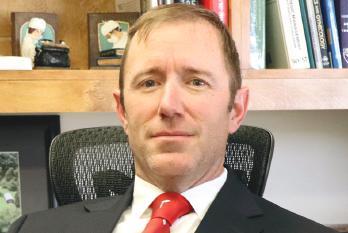
BOARD OF TRUSTEES
RALPH NOBO, JR., MD, Chair
GEORGE LYLE, MD
STUART PATTERSON, MD
GARY SCHEMMER, MD
SERGIO SEOANE, MD
ARVIND SONI, MD
Pets & Your Health
While dogs have been used to assist the vision-impaired since the early 1900s, pets were helping people long before then. The bond between humans and our furry companions is indisputable, especially when you consider the many health benefits of owning a pet. Regular walking and playing with pets has been shown to increase the amount of exercise people get and decrease blood pressure, cholesterol levels, and triglyceride levels. In addition, pets can help with loneliness and depression.
In this Pets & Your Health edition of Central Florida Health News, we explore how dogs can detect dangerous changes in blood sugar and prompt their owners to act.

Maguire Schmid of Lakeland knows firsthand the value of his Diabetic Alert Dog, Cadence. Even though Schmid wears a continuous glucose
JACKIE COURTNEY
Executive Director
4315 Highland Park Blvd Suite B
Lakeland, Florida 33813
Sincerely,
James J. Booker, MD
James J. Booker, MD Obstetrician and Gynecologist, Winter Haven President, Polk County Medical Association
monitor for type 1 diabetes, Cadence is able to sense dangerous levels before his monitor even registers the fluctuation. It’s this type of sniffer superpower that makes dogs the perfect companion for some who suffer from type I diabetes. Inside, we also talk to service dog experts to debunk some widely held misconceptions. They even address how, and if, to approach a service animal in public.
If you’re one of the many unlucky pet allergy sufferers, check out our feature article inside to learn more about what exactly your body is reacting to and how you can mitigate your symptoms.
Don’t forget to test your knowledge with our Pop Quiz. March is Endometriosis Awareness Month, so brush up on your knowledge, facts, and figures. HN
Some of the benefits of a PCMA membership include the following:
✱ Physician referrals
✱ Medical malpractice discounts with The Doctors Company
✱ Ongoing relevant communication
✱ Access to CME Programs
✱ Workers compensation insurance benefits
✱ Complimentary Socials/ dinners
✱ Strong PCMA physician representation in Central Florida Health News and Central Florida Doctor publications
✱ Listing advantages in the annual Central Florida Physicians Directory & Medical Providers Guide
✱ Physician and medicine advocacy at all legislative levels.
If you’d like more information about becoming a PCMA member or need to check your membership status for renewal, contact our Executive Director Jackie Courtney at (863) 644-4051 or email director@ polkcountydoctors.com.
centralfloridahealthnews.com CFHN | 5
PCMA
PCMA
LETTER
LETTER
INTRODUCTION
Mirror Neurons At Work in Dogs
by MARY JOYE, LMHC
We have all heard the hypothesis that pets look like their owners, but is this true? It never ceases to amaze me how scientists receive funding for research on obscure studies like this, but they do. Their findings may not surprise you, but they will give you a glimpse into our society as a collective. Winston Churchill had many animals, but he was photographed often with his favorite English bulldogs. That is an ideal example of how dogs look like their owners. Researchers chose a good random sample by going to three dog parks and asked owners to aid them in their study. Photos were taken and students were asked to match the dog to the owner. They reported:
When people pick a pet, they seek one that, at some level, resembles them, and when they get a purebred, they get what they want. The resemblance between dogs and their owners was confined to purebreds, and there was no correlation between length of ownership and

similarity.
It makes sense purebred dogs would automatically prove resemblance. However, there is a new trend toward adopting shelter dogs, particularly during the pandemic when people needed to be rescued from loneliness. Adopt-a-Pet statistics show a 61% increase in pet adoption last year. Those who adopt may not be as interested in an extension of their external image but instead their internal emotions.
Rescue dogs also tap into our empathetic natures and reward centers. It is also about matching a human personality to a pet. Animals have mirror neurons and exchange information with nonverbal cues. You know when a dog wants a treat or its belly rubbed as their nonverbal cues are explicit. They understand us, and we reciprocate, whether we look like them or not.
I have a dog who is a dachshund Chihuahua mix. He has short legs, a long body, huge
pointy ears, and a curly tail. I am glad I do not look like him! However, he does have a similar personality. I was told at the shelter that they saved him because of how he was so loving toward the staff. He was showing this through his mirror neurons. His online photo touched me because of subliminal cues. My mirror neurons were at work, and when I met him, it was apparent we were a perfect match. If you have room in your heart and home for a dog, it doesn’t matter if the pet looks like you. It is more important they are a good fit for you. When we accept a pet to become part of our family, we open our hearts a bit more. We feel better and the pet certainly does, too. They help us look in the mirror at ourselves externally and internally and enrich our lives in ways mere humans cannot.
6 | CFHN centralfloridahealthnews.com
PCMA LETTER BODY, MIND & SPIRIT
ABOUT THE AUTHOR: Mary Joye, LMHC, PA, is a licensed mental health counselor with offices in Lakeland and Winter Haven. She holds a Master of Arts in Counseling from Trevecca Nazarene University in Nashville, Tennessee. For more information, visit winterhavencounseling.com.
HN
Citation: Roy, Michael & Christenfeld, Nicholas. (2004). Do Dogs Resemble Their Owners? Psychological science. 15. 3613. 10.1111/j.0956-7976.2004.00684.x
Online Auction
March 25 - April 1, 2022
Cocktail Party & Live Auction
Friday, April 1, 2022 | 5:30 pm
Nora Mayo Hall
500 Third Street NW in Winter Haven
Scramble Golf Tournament

Saturday, April 2, 2022 | 9:00 am
Country Club of Winter Haven

4200 Country Club Road South
Since inception in 2010, the Lewis Family Cancer Fund has granted over $527,807 to local and regional cancer centers.

13 TH ANNUAL All proceeds from the 2022 events will go to support the Winter Haven Hospital Cassidy Cancer Center. The Cassidy Family For More Information, call: Josh Lewis (863) 287-2106 WHH Foundation (863) 292-4138 whhfoundation@baycare.org “Swing for the Cure” COCKTAIL PARTY & GOLF TOURNAMENT facebook.com/LewisFamilyCancerFund
Featuring Fuzzy Zoeller Winner of ‘79 Masters, ‘84 U.S. Open, 2002 Senior PGA Championship
POP QUIZ!
Do You Know The Signs and Symptoms of Endometriosis?
Pain and discomfort during menstruation are common symptoms women experience, but severe pain and other symptoms during your period may be a sign of endometriosis. This condition may be dismissed as severe symptoms during menstruation, so it is important to recognize the signs and symptoms of endometriosis so you can see your doctor and treatment can be started as soon as possible. Take our quiz on endometriosis and see if it’s time to talk with your doctor.
1. True or false? Endometriosis is an often painful disorder in which tissue similar to the tissue that normally lines the inside of your uterus, called endometrium, grows outside your uterus.
2. What percentage of American women between the ages of 25 and 40 are believed to be affected by endometriosis?
A. 2 to 10 percent C. 10 to 20 percent
B. 5 to 15 percent D. None of the above
3. Which of the following are symptoms of endometriosis?
A. Painful periods (dysmenorrhea); pelvic pain, cramping, lower back pain, and abdominal pain before and during your menstrual period
B. Excessive bleeding during or between periods
C. Pain during intercourse, bowel movements, or urination, and symptoms like fatigue, diarrhea, constipation, bloating, or nausea during periods
D. Infertility
E. All of the above
4. True or false?
The severity of your pain may not be a reliable indicator of the extent of your condition concerning endometriosis. You could have mild endometriosis with severe pain, or you could have advanced endometriosis with little or no pain.

5. Which of the following factors place you at greater risk of developing endometriosis?
A. Never giving birth
B. Starting your period at an early age and/or going through menopause at an older age
C. Short menstrual cycles, such as less than 27 days, and/or heavy menstrual periods that last longer than seven days
D. Having higher levels of estrogen in your body or a greater lifetime exposure to estrogen produced by your body
E. Having a low body mass index
F. Having one or more relatives, such as a mother, aunt, or sister, with endometriosis
G. All of the above
6. True or false?
One of the main complications of endometriosis is infertility. Around one-third to one-half of women with endometriosis have difficulty getting pregnant.
7. While the exact causes of endometriosis are unknown, which of the following are theories as to the cause of the condition?
A. “Reverse menstruation,” where during menstruation, some of the tissue backs up through the fallopian tubes into the abdomen where it attaches and grows
B. Endometrial tissue travels and implants via blood or lymphatic channels
C. Cells in any location may transform into endometrial cells
D. All of the above
8. True or false? For most women with endometriosis, the infertility caused by the condition can be corrected.
9. What tests and procedures are commonly used to diagnose endometriosis?
A. Evaluating a patient’s medical history and completing a physical examination, including a pelvic exam
B. Completing a laparoscopy, a minor surgical procedure in which a laparoscope, a thin tube with a camera at the end, is inserted into the abdomen through a small incision
C. Completing biopsies of suspicious tissue
D. Using ultrasound, CT scans, and/or an MRI scan
E. All of the above
10. Treatment for endometriosis can include which of the following?
A. “Watchful waiting” to observe the course of the disease
B. Pain medication, such as over-the-counter nonsteroidal anti-inflammatory drugs or other OTC analgesics
C. Hormone therapy
D. Laparotomy, surgery to remove as much of the displaced endometrium as possible without damaging healthy tissue; or a hysterectomy
E. All of the above
8 | CFHN centralfloridahealthnews.com
ANSWERS: 1. True. 2. A. 2 to 10 percent. 3. E. All of the above. 4. True. 5. G. All of the above. 6 True. 7. D. All of the above. 8. True. 9. E.
10. E.
All of the above.
All of the above.
compiled by ERIKA ALDRICH / Resources: Information provided by The Mayo Clinic and Johns Hopkins Medicine.
PREVENTION FEATURE
Where Sleep and Mental Health Intersect
 by TERESA SCHIFFER sponsored by Central Florida Health Care
by TERESA SCHIFFER sponsored by Central Florida Health Care

Sleep is often an underrated aspect of our self-care routine, but lack of sleep can have a negative impact on our health, especially our mental and behavioral health. There are two broad categories of sleep: REM and non-REM. REM stands for “rapid eye movement. Within non-REM sleep, there are three stages. The first stage is when you are first dozing off and your heart rate begins to slow and your breathing becomes deeper. In the second stage, your body relaxes even further, your temperature drops a bit, and your eyes stop moving about.



The third stage of sleep is your body’s deepest state of relaxation. During this stage, you are not experiencing stress or negative thinking, so you are able to fully relax.
According to Central Florida Health Care’s Ruth Delva, a licensed clinical social worker, the third stage is the most important category.


“This is the lowest level – you’re relaxed, your heart rate has slowed down, your muscles are relaxed, and you’ve entered into a deep sleep,” she explains.
The other state of sleep is REM.
“In REM,” Delva says, “there’s a lot of activity




going on in the brain. So though you’re in a deep state of sleep, you’re expending a lot of energy. This is where you’re dreaming and your body becomes a bit incapacitated temporarily.”
So what makes sleep so important? Simply put, it’s powerful.

“We know that lack of sleep can alter mood,” Delva explains. “We know it can cause irritability and anger, and it can also cause you not to be able to cope well with stress. Sleep impacts mental health, and mental health impacts one’s mood.”
The third stage of sleep is particularly important because that is when you are able to completely relax your body and mind. Without this state of relaxation, a number of negative changes can take place within you.
“When you aren’t relaxed, when you aren’t able to get sleep,” Delva isays, “you’re going to be crankier, sluggish, you may be forgetful, not able to focus, so it’s very vital that you get a good amount of sleep.”
The National Institute of Health recommends that the typical adult get about seven to nine hours of sleep each night. This is necessary for an individual to feel energized, with a
more positive mood and mental health state.
To ensure that you are giving yourself the best chance at a good night’s sleep, there are a few things to keep in mind.
First, avoid using electronic devices for at least 30 minutes prior to bedtime. The blue light emitted by cell phones, computer screens, and televisions can interfere with the body’s production of melatonin, which is the hormone regulating the sleep cycle.
Don’t eat a heavy meal before bed, either. This causes the body to expend energy while digesting food at a time when you should be decreasing your energy usage. Caffeine is a stimulant and should be avoided in the evenings. Though alcohol is a depressant, it can interfere with melatonin production, and also should be avoided.
Limit naps to 30 minutes or less. Create an appropriate sleep environment in your bedroom with dim lights, comfortable bedding, and, if it appeals to you, essential oils to diffuse calming scents in the room. If you are still having trouble winding down, visit Central Florida Health Care to make sure there is no underlying medical problem for your restlessness.
centralfloridahealthnews.com CFHN | 9 COMMUNITY HEALTH 866.234.8534 Walk-ins Welcome Behavioral Health Dental Health Food Access Financial Assistance Medical OB/GYN Pediatrics Pharmacy Referrals Vision
More Than Man’s Best Friend
Maguire Schmid Finds Perfect Partner in
Diabetic Alert Dog
by TIM CRAIG
photos by MICHAEL WILSON
Maguire Schmid remembers his first encounter with a Diabetic Alert Dog.

It was about seven years ago at a festival. One of his friends who has type 1 diabetes had one.
“I had no idea they even existed until I met one,” says Schmid, who was diagnosed with type 1 diabetes at age 10 in 2010. “I didn’t know how they worked or anything.”
Yet, when Schmid walked into the booth where his friend and the alert dog were, the animal immediately went into alert mode.
“I felt fine,” the Lakeland resident says. “I didn’t have a continuous glucose monitor at the time, so I did a glucose test, and it said that my blood sugar was high.”
Schmid and his friend are two of the estimated 16 million Americans living with type 1 diabetes. According to the Juvenile Diabetes Research Foundation, about 64,000 people in the U.S. are diagnosed with type 1diabetes each year.
When Schmid was first diagnosed at age 10, he and his family charged ahead, learning as much as they could about the disease and forming a family team called “Maguire’s Mission,” which hosted and participated in walks to raise money for the JRDF. When he was 15, he was chosen to go to Washington, D.C., to speak with lawmakers about Type 1 diabetes and the importance of the availability of continuous glucose monitors.
“My parents were really instrumental in keeping me busy and moving forward,” he says. “They wouldn’t let me get down about having type 1 diabetes and were always looking ahead.”
After learning about the growing use of diabetic alert dogs are that trained to detect low or high blood sugar levels and prompt their owners to act, Schmid and his family chose to explore that option.
The Perfect Match
Their search took them to Tattle Tails Scent Dogs in Salt Lake City, Utah. According to the Tattle Tails website, each of their puppies are scent imprinted, which means they are exposed to massive amounts of realtime diabetic scent from the time they are born. An “imprinted” puppy is a dog that comes from a line of service dogs and they are trained from the moment they’re born to recognize changes in blood sugar.
When a person’s blood sugar drops, dogs are able to detect it through breath and sweat. Dogs, which have 50 times as many scent receptors as humans, can smell this change of chemical makeup.
Through a sponsorship with Bryce’s Buddies Juvenile Diabetes Foundation in Winter Haven, Schmid was able to get on the Tattle Tails
centralfloridahealthnews.com EDITION FEATURE
CONTINUED ON PAGE 20
COMMON MISCONCEPTIONS ABOUT SERVICE ANIMALS Rights, Best Practices, and Etiquette
by CELÉSTE JO WALLS
ABOUT THE AUTHOR: Celéste Jo Walls writes on topics related to her professional and personal expertise, which includes mortgage news, medical topics related to Type 1 Diabetes, and medical service dogs. She is a Senior Loan Officer at American Residential Mortgage as well as a wife and mother of five children, two of them Type 1 diabetes warriors, who are soon-to-be handlers of a diabetic alert dog. You are welcome to follow their medical service dog journey at Facebook.com/team-t1-tails.
You have heard of them: guide dogs for the blind, PTSD support dogs for veterans, seizure response dogs, alert dogs for the hearing impaired, diabetic alert dogs, wheelchair assistant dogs, and more. You may have seen them in department stores, at theme parks, in restaurants, and even on airplanes. They are more than just dogs; they are four-legged medical service members of our society. To their handlers, they are lifesavers, and the work these service dogs do is critical to their owner’s safety and long-term quality of life.
Due to their life-enabling importance, public access for these service dogs is not only necessary but essential. Unfortunately, there are a lot of misconceptions about public access for these members of our society, as well as how family, friends, and strangers should (and should not) interact with these special animals. Service animal trainers and handlers are on the front lines of
challenges posed by misconceptions. Take Stephanie and Mitch Bowen, of Bowen Elite Service Dogs, as an example. “One of the biggest misconceptions pertaining to service dogs in public is how they are to be treated by others,” Stephanie says.

Don’t Distract a Service Animal
“While training the dogs that are in our program in public venues, we have several people approach the dogs in different ways. The first, and unfortunately the most popular, way is to invade the dog’s space and reach out and pet them without asking us,” Stephanie explains. “People tend to be inconsiderate that these working dogs do not know them and may have a reaction toward strangers. The dogs we train will not be ‘ruined’ by someone politely touching them. In fact, they won’t react much at all. But, the point is that people don’t think about the effects their interactions may cause.”
centralfloridahealthnews.com CFHN | 11
ON PAGE 21 EDUCATION FEATURE
CONTINUED


DEFEAT THE DANDER
Understanding And Treating Pet Allergies
by SEAN JARVIS
For thousands of people who love animals and their pet companions, there also comes a distracting side effect — pet allergies. Fortunately, there are several ways to manage your allergies and reduce your symptoms.
Why Do I have Allergies, and What Causes Them?
While it is not believed that specific allergies are inherited, there is a strong genetic correlation to contracting allergies. Through this genetic predisposition and when coupled with a set of risk factors, your chances of becoming sensitized to a particular allergen are heightened. As a result, allergies can happen to anyone at any age.
Most people who suffer from pet allergies also have allergic reactions to other allergens, such as pollens and mold.

During an allergic reaction, your body’s immune system senses foreign substances (pet dander, saliva, urine, etc.) and sends a chemical signal to your mast cells to release histamine. When histamine leaves the cell, it increases blood flow, which causes inflammation. This lets other chemicals know it is time to react, triggering an allergic reaction. Now, you are sniffling, sneezing, coughing, and wiping your runny eyes!
The Severity of Allergic Reactions
For most people with pet allergies, exposure to
pet dander, saliva, and urine will trigger a mild reaction. (Interestingly, pet hair is not considered an allergen itself, but it easily collects dander, urine, and saliva, which are allergens.)
The severity of allergic response in people with pet allergies varies, and according to Dr. Weyman Price of Watson Clinic in Lakeland. “Some people will have very minimal symptoms when exposed to a pet while others may even experience a severe asthma attack.”
So just how severe can pet allergies get?
“Pet allergies are generally not deadly, but they can sometimes trigger anaphylactic shock, which is life-threatening, although this is VERY rare,” Price explains.
“For some, this exposure can cause severe breathing problems. Highly sensitive people can begin coughing, wheezing, and have shortness of breath within five to 30 minutes of inhaling allergens. Sometimes highly sensitive people also get an intense rash or hives on the face, neck, and upper chest.”
This is why it’s crucial to be aware of your surroundings, especially if you know you have allergies. The most common type of pet allergy is to cat dander.
“Because cat dander is finer and lighter than a dog’s,” Price says, “it tends to impact a greater number of people. An estimated 10 percent of Americans are allergic to household pets; with
14 | CFHN centralfloridahealthnews.com PATIENT FEATURE
cat allergies nearly twice as common as dog allergies.” This is why no matter how much you clean, scrub, and vacuum, you may still find yourself experiencing mild allergic reactions.
Minimizing Your Immune Response
The best chance at easing your allergies would be to avoid spending time around the animals you react to. However, if this is not possible, taking specific steps to limit your exposure would help cut down on allergy flareups.
• Since we spend one-third of our time in our bedrooms, keeping pets out will significantly reduce allergy symptoms and help you sleep better.
• Using air purifiers with HEPA filters will keep dust, dander, and pet hair to a minimum in rooms where your pets spend most of their time.
• Regularly cleaning and vacuuming your home, especially with vacuums that meet the HEPA standard, will keep allergens from getting kicked up into the air.
• Regularly bathing your pets or taking them to a groomer also can be helpful to keep hair and dander levels low.
• Brushing your pets daily and making sure to wash your hands after handling your pet (as well as their toys, dishes, and bedding) can go a long way.

If you still have allergy symptoms despite your best efforts, it may be time to turn to medicine. Using nasal sprays, antihistamines, and bronchodilators
will help relieve your discomfort. But, according to Price, one of the best ways to overcome pet allergies is allergen Immunotherapy.
“A.I.T. (or allergy shots) remains the most effective way for most people with pet allergies to eventually overcome them IF they plan to have continued exposures,” Price says. “Medications such as antihistamines, intranasal steroids, and allergy immunotherapy – as prescribed by a board-certified allergist” also are recommended.
‘Hypoallergenic Pets’
While some pet breeds are marketed as “hypoallergenic,” no pet is entirely non-allergenic. “Hypoallergenic” pets produce fewer allergens than others and may shed less, but their dander, saliva, urine, and sweat can still cause an allergic reaction. While hair itself is not the problem, an animal that sheds less will keep dander and other pet allergens to a minimum.
The value that pets bring to our lives cannot be understated. For many people, their pets are considered integral members of the family, and managing pet allergies is a price they are willing to pay for that loving companionship. By taking steps to reduce your contact with allergens and manage reactions and flareups, allergic pet owners can continue living a happy and harmonious life with their furry companions. HN
Retirement Planning College Savings Plans
Financial Planning
HEALTHY AGING A Watery Dry Eye
A Paradox
Gritty, sandy, scratchy… watery? Can all those words be used to describe dry eyes? In short, yes! Dry Eye Syndrome is a mystery for patients because the symptoms can be variable! Paradoxical Dry Eye is what eye doctors call Dry Eye Syndrome in patients whose main symptom is constant tearing. So, grab your tissue, and let’s dive into why this happens!
The Healthy Tear Film
On the surface of a healthy eye, there’s a tear film made of oil and water. Just like in your salad dressings, oil and water don’t mix. The oil layer keeps the water from evaporating into the air on the eye. The water layer is produced by a gland that sits just under your eyebrow bone, called the lacrimal gland. The water is released when the brain signals to the gland. Finally, the oil layer is produced by multiple smaller glands located within your eyelids. These glands in the eyelids are called meibomian (MY-BO-ME-IN) glands. The oil is released from the meibomian glands every time you blink.
Two Types of Dry Eye Syndrome
So, there are two different types of Dry Eye Syndrome! One type is caused by a deficiency in the water portion of your tears (hello sandy, gritty feeling!), and the other type of dry eye is caused by a deficiency in the oil portion of your tears. When the oil portion is absent and the eye begins to feel dry, then the only thing the brain can do is signal to the lacrimal gland to make more water! But remember that the oil is only released from the meibomian glands when you blink! This leads to constant watering and paradoxical dry eye!
What Causes This In the First Place?
When oil fails to release from the glands, the oil stagnates. Oil stagnation inside the glands results in the oil becoming thick, pasty, and unable to release during a blink. Eventually, the stagnation can lead to permanent damage to the glands. This is called Meibomian Gland Dysfunction (MGD).
Finding the root cause of MGD is the key to the proper treatment. In short, anything that causes a reduction in blinking can lead to MGD, such as prolonged electronic device use (looking at you gamers and electronic readers!). MGD can also be caused by increasing age and even certain medications.
Treating the Watery Dry Eye
John Scheck
Portfolio
Management Director
Senior Vice President

Branch Manager 1101 1st St S, Ste 201
Winter Haven, FL 33880
+1 863 291-8306
john.scheck@morganstanley.com
Unfortunately, there’s no magic pill or eye drop that can fix MGD. I often have patients ask me about prescription eye drops for MGD. In most cases, the start of treatment is modifying the behaviors that led to the MGD (reduced device use, reminders to blink) and lid hygiene. Warm compresses and lid massage can also be used to help clear the glands of old oil. Over the counter, artificial tears with an oil component can also provide temporary relief to the watery, dry eye.
If you are dealing with dry eye issues or want to learn more, call us at 800-282-3937 to schedule an appointment with one of our doctors or visit us online at EYESFL.COM.
centralfloridahealthnews.com CFHN | 15
COURTNEY BEAUMONT, OD
This column is sponsored by Eye Specialists of Mid-Florida, and the opinions expressed herein may not reflect those of CFHN or of its advertisers.
BIO: Courtney Beaumont, O.D. is a board-certified optometrist who sees patients at the Sebring location for Eye Specialists of Mid-Florida. She specializes in dry eye treatment and pediatrics and is accepting new patients.
© 2016 Morgan Stanley Smith Barney LLC. Member SIPC. CRC1596726
March 2022 | CALENDAR
RECURRING ONLINE EVENTS
BrainFlex Wellness Club
This “body, mind, and spirit” approach to aging well is geared towards seniors looking to stay sharp and fit as they age. The class incorporates four key concepts: exercise/meditation, social connections, interactive nutrition education, and brain training/life-long learning. The goal is to slow or prevent cognitive decline and improve quality of life. This class takes place on the second and fourth Tuesdays of each month from 10:30 – 11:30 a.m. The Zoom link is https://us02web.zoom.us/j/3876883694. Before the class, please download and print class materials from www.BrainFlexWellness.com. If you have any other questions, please email ORL.MDC@AdventHealth. com.
Caregiver Support Group – Weekly
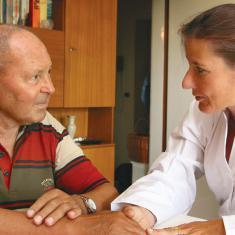


This group meets every Monday at 11 a.m. to discuss caregiver concerns and provide fellowship and support for one another. Meetings are currently taking place online using the Zoom platform. You can join the recurring meeting using this link: https://us02web.zoom.us/j/86739398714, or email ORL.MDC@AdventHealth.com for more information.
Functionally Fit – Virtual Exercise

During this online class, participants are guided through a series of functional strength training exercises to improve cardiovascular fitness, mobility, motor control, and balance. Caregivers are encouraged to join in on the exercises. This workshop is delivered through Zoom teleconferencing platform and takes place every 3rd Thursday of the month from 2 – 3 p.m. The link to join is https://us02web. zoom.us/j/3876883694. For more information, please email ORL.MDC@AdventHealth.com.
Monthly Caregiver Support Group (Previously Met at Faith Assembly)
This monthly group meets to share advice and experiences, and encourage one another. The group meets at 1 p.m. on the third Thursday of each month using the Zoom online platform. The link to join the meeting is https:// us02web.zoom.us/j/89447209844. If you have any questions, please email ORL.MDC@AdventHealth.com.
Music Therapy
Join board certified music therapists on the first Tuesday of every month at 11 a.m. The Maturing Minds Music Therapy group uses neurologic music therapy techniques to boost brain and behavior functions, such as memory, communication, attention, and movement. The meetings are taking place online using Zoom. The link for the recurring meeting is https://us02web.zoom.us/j/3876883694. Please email ORL.MDC@AdventHealth.com if you have any questions.

EVENTS AND FUNDRAISERS
February 26 – March 12 – 2022 Polk Senior Games
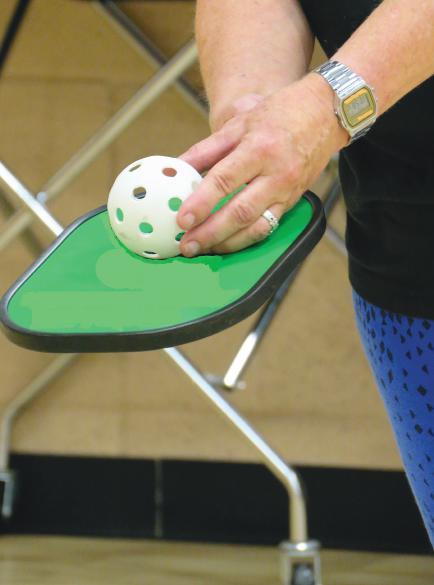
Prepare for delivery at BayCare by attending a virtual tour of the Maternity Center. This is a free class for expectant mothers. One support person may also attend. The class will take place from 5:30 –7 p.m. and 7:30 – 9 p.m. and is sponsored by St. Joseph’s Women’s Hospital. There will be several more sessions throughout February as well. For more information, please visit www.baycare.org/ events or call 855-269-4777.
March 1 – Breastfeeding Support Group Virtual
This is a group solely for breastfeeding mothers, to allow them a safe environment in which to support each other, assisted by certified breastfeeding consultants. Access to a camera and microphone is necessary. The free event will take place from 10 –11 a.m. Sponsored by St. Joseph’s Women’s Hospital. You can find more information at www.baycare. org/events, or call 855-269-4777.
16 | CFHN centralfloridahealthnews.com
March 2, 9, 16, and 23 –Restorative Yoga Cancer Program Virtual

This is a stress reduction yoga program designed to help cancer patients cope with their treatments and improve their quality of life. Learn techniques such as regulated breathing, visual imagery, meditation, and various stretching poses to improve balance, flexibility, and strength. The class is taught by a registered yoga teacher and exercise specialist. Microphone and camera access is encouraged but not required. The free lessons will take place from 7:30 – 8:15 a.m. Register online at www. baycare.org/events or call 855-269-4777 for more information.
March 5 – Lakeland Regional Health Hollis Cancer Center Promise Run
Join a community of people who believe that cancer can be conquered while celebrating the lives of so many loved ones affected by cancer. The Promise Run certified 10k and 5k courses wind through the streets of historic downtown Lakeland, around scenic lakes. Onsite registration begins at 6 a.m., with the 10k run starting at 7 a.m. and the 5k at about 8:35 a.m. at 121 S Lake Ave in Lakeland. For complete details, including fees for entry, and to register early online, please go to www.PromiseRun.org.
March 11 – Relay for Life POLK
This is the American Cancer Society’s largest fundraiser. It is a chance to celebrate survivors, honor those we’ve lost, and help those currently battling this terrible disease. The survivor dinner starts at 5 p.m. and requires registration in advance. At 6 p.m., the Opening Ceremony will be held. The festivities include a “Men in Heels Race,” raffles, and music with DJ Carlos. To register your team, please go to www.RelayForLife.org/PolkFL, or call 800-227-2345.
March 13, 19, and 26 – BayCare HealthHub Farmer’s Market
compiled by TERESA SCHIFFER
March 15 –Menopause the Musical
You’ll laugh, cheer, and dance in the aisles at this delightful take on what women experience when they go through “The Change.” Showtime is 7:30 – 9 p.m. at RP Funding Center, Youkey Theatre, located at 701 W Lime St in Lakeland. For the most accurate information on ticket prices and availability, please go to www.rpfundingcenter.com.
March 22 – Perinatal Bereavement Support Group Virtual
This support group for families who have experienced the loss of a baby through miscarriage, ectopic pregnancy, stillbirth, or early infant death will help explore grief and strengthen communication with loved ones while honoring your loss and encouraging self-care. Access to a microphone and camera is necessary. It takes place from 6:30 – 7:30 p.m. and is sponsored by Winter Haven Women’s Hospital. For more information, please visit https://baycare.org/services/maternity or call 855-269-4777.
March 3 – Maternity Center Orientation Virtual


Prepare for delivery at BayCare by attending a virtual tour of the Maternity Center. This is a free class for expectant mothers. One support person may also attend. The class will take place from 7 – 9 p.m. and is sponsored by Morton Plant Hospital. There will be several more sessions throughout February as well. For more information, please visit www.baycare. org/events or call 855-269-4777.
BayCare HealthHub is hosting a farmer’s market on the third and fourth Saturdays of each month. Local vendors will be offering fresh produce, hot food, and more, including fun activities for children. This takes place from 9 a.m. – 1 p.m. every third Saturday at BayCare HealthHub (Bloomingdale), located at 2470 Bloomingdale Ave in Valrico, every fourth Saturday at BayCare HealthHub (Land O’ Lakes), located at 18600 Fernview St in Land O Lakes, and the second Sunday of each month from 10 a.m. – 2 p.m. at BayCare HealthHub (Bardmoor), located at 8787 Bryan Dairy Road in Largo. If you need more information, please call 855269-4777.
March 22 – Bariatric Support Group Virtual
Sponsored by St. Anthony’s Hospital, this free virtual meeting will take place from 5 – 6 p.m. A microphone and camera are needed to participate. The topic for this session is the relationship between sleep disorders and sleep. For more information, please call 855-269-4777.
centralfloridahealthnews.com CFHN | 17
No Bones About It: Yummy Treats for Your Best Friend
by CAROL CORLEY
Who wants a cookie?
Anyone with a dog knows that our furry friend will be immediately next to us because cookies aren’t just for people.
But while we all like cookies — dogs can’t always have the treats that humans love. Some ingredients are harmful, and even fatal, for our canine friends.

Chocolate, grapes, raisins, avocados, onions, garlic, and uncooked yeast dough are just a few of the ingredients that can be deadly for dogs. A very big danger is xylitol, often used as a sweetener in peanut butter, candy, chewing gum, and even some baked goods. It is sometimes listed in ingredients as birch sugar, and it’s a killer.
So what ingredients are safe to use when we bake for our dogs? How about starting with peanut butter, which they very much enjoy — being careful that it is without xylitol. Our first recipe includes pumpkin, known to be an excellent superfood for dogs. You can also experiment and include fried chopped bacon bits, carrots, apples, and zucchini in your dog treats.

Of course, remember that all dog goodies should be cooled completely before being offered to the dog, and they are best stored in the refrigerator.
Peanut Butter and Pumpkin Dog Treats

(Adapted from allrecipes.com)
Ingredients:
Peanut butter, 2 tablespoons creamy Eggs, 2
Pumpkin, 1/2 cup canned puree (pumpkin only)
Flour, 2-1/2 cups whole wheat or of choice Water as needed
Directions:
Mix all ingredients. Dough should be dry and stiff, but you can add water as needed to make it workable. Roll out dough to 1/4” thick and cut into bite-sized pieces. Bake for 40 minutes in the oven preheated to 350F for a hard, crispy texture.
Peanut Butter Dog Treats
(Adapted from eatingbirdfood.com)
Ingredients:
Peanut butter, 1/2 cup creamy Banana, 1/4 cup mashed
Flour, 1 cup whole wheat or of choice
Stock, 1/4 cup, may use beef, chicken, or vegetable
Directions:
Mix all ingredients, adding stock until dough is thick. Roll out dough to 1/4” thick and cut into bite-sized pieces. Bake for 18 minutes in the oven preheated to 350F, or longer, depending on desired degree of crispness.
Homemade Chicken Dog Treats
(Adapted twohealthykitchens.com)
Ingredients:
Chicken, 2 cups chopped, can use leftover chicken without the skin but make sure there are no bones

Egg, 1
Greek yogurt, about 5 ounces, plain nonfat
Flour, 2 cups whole wheat
Water, 3/4 cup
Directions:
Combine all ingredients until the dough is thick and sticky. Drop by level tablespoons onto baking sheets lined with parchment paper. Treats do not spread very far, so you can drop them close together. Bake for about 12-14 minutes in an oven preheated to 350F, or until the desired doneness.
18 | CFHN centralfloridahealthnews.com HEALTHY COOK
Spinach, Carrot, and Zucchini Dog Treats

(Adapted from damndelicious.net)
Ingredients:
Peanut butter, 1/4 cup smooth Eggs, 2
Pumpkin, 1 cup canned puree (pumpkin only)
Carrot, 1 peeled and shredded
Zucchini, 1 shredded
Spinach, 1 cup baby spinach, chopped
Oats, 1/2 cup old fashioned
Flour, 3 cups whole wheat, or more if needed
Directions: Beat together until well-combined peanut butter, pumpkin puree, and eggs in an electric mixer, using paddle attachment if desired.
Gradually add oats and flour until the dough is no longer sticky. Next, incorporate vegetables.
Transfer to a lightly floured surface and knead the dough, then roll out to 1/4” thickness and cut into desired shapes.
Bake about 20-25 minutes on a baking sheet lined with parchment paper in the oven preheated to 350F, or longer.
Meet Our Doctor
The Link Between Obesity, Vascular Disease
Dr. Aparajita is a fellowship-trained vascular surgeon and has been serving the Polk County community for the past 1 year. She earned her Bachelor of Medicine and Bachelor of Surgery (MBBS) degree at University of Delhi, India. She then completed a research fellowship in vascular surgery at Columbia University Medical Center in New York and a residency in General Surgery at Staten Island University Hospital in New York, she completed her fellowship training in Vascular Surgery at Newark Beth Israel Medical Center and St. Barnabas Medical Center in New Jersey.
oving ourselves and taking care of our health to prevent or delay the onset of chronic conditions is an important aspect of our health.
LDr. Aparajita is also a Member of the Royal College of Surgeons of Edinburgh, UK (MRCS Ed) and completed her Basic Surgical Training in England soon after her medical school.
Dr. Aparajita is the co-author of more than two dozen journal articles, publications and oral presentations, including topics such as endovascular treatment for thrombosis, aortic aneurysm repair, stroke, peripheral artery disease and other vascular conditions.
Additional posts and volunteer work include a teaching position at Hofstra Northwell School of Medicine and as a Member of the Public and Professional Outreach Committee as well as the International Relations Committee at the Society for Vascular Surgery (SVS).
Dr. Aparajita was recently nominated for the American Medical Association (AMA) Inspiration Award that recognizes physicians who have contributed to the achievements of women in the medical profession.
This is the fourth part of a series focusing on lifestyle management for the prevention of vascular disease. In previous columns, we’ve addressed smoking cessation, blood pressure regulation, and the importance of sugar control. This month, we’ll look at the role of obesity in the prevention of vascular disease and how we can make lifestyle choices that can prevent or delay the onset of obesity.
RITU


APARAJITA, MD, MRCS (Ed), MBBS





Specialty: Vascular & Endovascular Surgery


Joining KSC Cardiology November 9, 2020
The World Health Organization defines obesity as “abnormal or excessive fat accumulation that presents a risk to health.” The disease of obesity affects more than one-third of U.S. adults, according to the Centers for Disease Control and Prevention. The CDC uses body mass index, or a person’s weight in kilograms divided by the square of their height in meters, to measure obesity. Individuals with a BMI of 30 or higher are considered to have obesity.
Obesity has long been a topic of bias and stigma. While public perception is slowly shifting, many people (including nearly half of healthcare professionals) still assume that obesity is the individual’s fault, solely the result of them eating too much and getting less exercise. Obesity is a disease caused by a complex interplay among genetics, the environment, and many other factors. Furthermore, recent studies have demonstrated that there are 236 other diseases impacted by obesity, 13 of which are cancers.
The treatment of obesity includes behavioral and nutritional interventions, medical treatment, and even surgery (bariatric surgery).
The recognition of obesity as a disease also distinguishes obesity as something to be taken seriously. For most people suffering with obesity, simply eating less and moving more will not result in sustainable longterm weight loss. A person is no more at fault for developing obesity than they are at fault for developing heart disease or high blood pressure. A person with obesity deserves the same respect and compassionate healthcare.
For more information, visit the following websites:
• americanobesityassociation.org


• obesity.org
• obesitymedicine.org



This column is sponsored by KSC Cardiology, and the opinions expressed herein may not reflect those of CFHN or of its advertisers.





BIO: Dr. Aparajita is a fellowship-trained vascular and endovascular surgeon. She is a co-author of 20+ journal articles and publications and was recently nominated for an Inspiration Award by the American Medical Association (AMA).

centralfloridahealthnews.com CFHN | 19
Professionally licensed, Locally Owned, Managed, and Bonded 863-439-6550 www.GarrisonLand.com • Landscaping • Irrigation • Lawn Care • Yard Spraying • Sod • Pest Service Lawn Care Irrigation $50 Referral fee for contacts leading to Yard Spray or Pest Control agreements. Inventory Needed We want to manage your property, HOA, or Association. Call today for a free no obligation quote. $100 Referral fee for contacts leading to a management agreement with Home Owners associations, Condominium associations, or Rentals management. Phone: 863-439-6550 Fax: 863-292-0846 www.GarissonPropertyServices.com Locally Managed, 24 Hour Availability Dundee Office 28609 Hwy 27 Dundee, FL 33838 863-439-6550 Davenport Office 121 Webb Drive Suite 205 Davenport, FL 33837 863-353-2558 Kissimmee Office 359 Cypress Parkway Kissimmee, FL 34759 407-241-4054 GarrisonPropertyServices.com WINTER HAVEN 2.0 Contact Meghan Young | 863.354.5017 Customized Medical Office Space and Executive Suites Ready for Available Lease
RITU APARAJITA, MD, RPVI KSC Cardiology
NEWS
HEART
Is It Melanoma? Learn the Warning Signs
Melanoma is a dangerous type of skin cancer that comes from cells known as melanocytes. While it’s less common than basal cell carcinoma or squamous cell carcinoma, two types of skin cancer that form in other types of skin cells, it is more dangerous. Melanoma can quickly spread to other organs if not treated at an early stage.
What Causes Melanoma?
Melanocytes, like basal cells or squamous cells, are skin cells. Melanocytes are found in the upper layer of the skin. They’re responsible for producing melanin, which gives the skin its unique color. The damage occurs when these skin cells are exposed to dangerous ultraviolet (UV) radiation, like from the sun or a tanning bed. When exposure occurs, it causes the melanocyte to produce more melanin, but only one of the two types. This pigment attempts to darken the skin, leading to a tan. Melanoma, a type of skin cancer, occurs when exposure to UV radiation causes DNA damage to the cells, triggering mutations in the melanocytes. This results in uncontrolled cellular growth: cancer.
Darker-skinned people naturally have higher concentrations of the eumelanin type of melanin, the type that is produced when we get a tan. This type has the ability to protect the skin from sun damage, while pheomelanin, the type more common in fairskinned people, does not. This causes people with fair skin to be more susceptible to burning, skin damage, and skin cancer.
How Do You Spot It?
Melanoma can present in a variety of ways, so it’s important to see your dermatologist regularly and check in on any problem spots. Early detection is vital, as well as protecting from sun damage by wearing sunscreen.
Melanoma can appear in new or existing moles, in slightlyraised blotchy patches from sun-damaged skin, in lesions, or even under the nails or on the soles of feet. It starts just under the skin, then spreads if not caught.
How Common Is Melanoma?

The United States will see an estimated 197,700 cases of melanoma diagnosed this year. About half will be noninvasive in the top layer, while the other half will be invasive, penetrating deeper into the skin’s second layer and spreading.
waiting list, and just seven months later he was selected. As part of the pairing process, Tattle Tails owner K.C. Owens had a one-on-one chat with Schmid, like she does with all candidates.
“She really works to pair you based on your lifestyle and personality characteristics,” says Schmid. “At that time, I was an arrogant teen, so she knew I needed an alpha dog.”
During the pairing process, participants are placed in a Facebook group to ask questions and interact. Owens also hosts live-streamed sessions to allow the group to see the puppies grow. Owens does not disclose which puppy is matched with which family, but there was one dog that Schmid couldn’t help but notice.
“You definitely knew she was the alpha,” he says. “She had a purple collar on and always seemed like she was doing something extra — like climbing on top of the other puppies to be noticed or guarding the water and food bowls.”
When the puppies reached 8 weeks, it came time for the pairing ceremony with the other families. At the ceremony, the feisty, purple-collared black Lab, named Cadence, was given to Schmid.

Getting in Sync With Cadence
Coming home with Cadence in 2017 was just the beginning of the journey. Once the pair were matched, Schmid and Cadence needed to continue online training classes to complete the pairing process.
“She was definitely an alpha and was persistent as ever,” says Schmid.
At first, he says, to catch his attention, she would sit real still and stare intensely at him. “That was all she knew how to do,” he says. “We needed to work out how to communicate and understand each other.”
During their first year together, the pair worked out a system of signals. It all starts with the stare to get his attention, he says. Then he asks Cadence what’s wrong and she will respond with one of two signals. If his blood sugar is low, Cadence will raise her paw and make a swatting motion. If his blood sugar is
high, she will make a bowing motion, with her front low to the ground and her backside high.
“It took a lot of work,” Schmid remembers, “but after about year, we had it worked out.”
It’s worked out so well, he says, that now Cadence almost always outperforms his CGM. “She consistently gives me alerts about my sugar levels before my monitor,” he says. “It almost makes the monitor secondary.”
Moving Forward
There have been quite a few changes since Cadence joined Schmid on his journey. He has grown from a high schooler to a 21-year-old with a fulltime job and he recently got married, meaning Cadence needed to get used to sharing Schmid.
“At first, it didn’t go well,” he says. “She was not used to having an extra person around. As the alpha, it was an adjustment. But after about two months, she treats my wife as one of the family.” Through it all, it’s impossible for Schmid to imagine life without his canine companion.
“Cadence has taught me a lot about myself and a lot about dogs,” he says. “Moving forward, it just keeps getting better. It’s awesome to have a companion that is always looking out for you.” HN
20 | CFHN centralfloridahealthnews.com
HEALTHY SKIN
ALEX W. KENNON, MD, FAAD
This column is sponsored by Lakeside Dermatology, and the opinions expressed herein may not reflect those of CFHN or of its advertisers.
More
Man’s
Friend continued from page 10
Dr. Alex W. Kennon, MD, FAAD, is a board-certified dermatologist who is fellowshiptrained in Mohs micrographic surgery. He received his undergraduate and medical degrees from Florida State University and completed his dermatology residency at Medical College of Georgia at Augusta University. Lakeside Dermatology has offices in Sebring and Winter Haven.
Than
Best
Common Misconceptions About Service Animals
Communicate With the Handler First


“The correct way to approach a service dog is to politely communicate with the handler,” she says. “They may make compliments about the dog and even ask questions, but they should not be speaking to the dog. This would be a distraction, on top of all the other distractions they are dealing with at that moment. Luring a service dog’s attention away from the handler could be detrimental to the dog fulfilling its duties to its person, which could have catastrophic results.”
Emotional Support Animals Are Not Service Animals
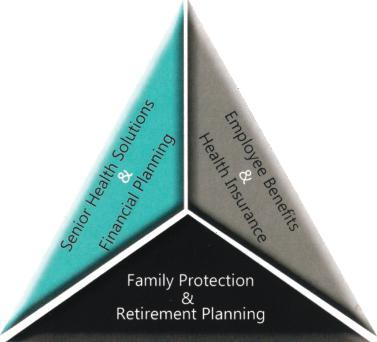
So how can you tell the difference between a service animal and a regular pet? Title II and Title III of the Americans with Disabilities Act, which was revised in 2010, defines a service animal as “any dog that is individually trained to do work or perform tasks for the benefit of an individual with a disability, including a physical, sensory, psychiatric, intellectual, or other mental disability.” Under this same regulation,
continued from page 11
it is defined that “emotional support animals, comfort animals, and therapy dogs are not service animals.” Therefore, regular pets and emotional support animals and their owners do not have the same level of public access as a service animal and his handler.

“At Bowen Elite Service Dogs, we believe that there is a definite difference between service dogs and emotional support dogs. Service dogs are to give assistance to people who have had a medical diagnosis or a significant event/ situation that creates a need for help from a working dog,” Stephanie says. “Emotional support dogs have the purpose of creating a positive atmosphere for their owner when they need it. The training that each classification goes through is entirely different.”
Is There Any Place Where a Service Animal Is Not Allowed to Go?
The ADA requires that all state and local governments allow admission of service animals and their handlers in all areas where the general

public is allowed to be. “Service dogs cannot be denied access anywhere that their handler is allowed to enter,” Mitch says. “So, if a business or venue is denying access to them, they may face very serious repercussions as a result.”
However, it is the responsibility of the handler to supervise the service animal while in public spaces. According to the ADA National Network, if a service animal is behaving in an unacceptable way and the handler does not have control, the business or establishment does not have to allow access on its premises. “Service dog handlers should have a large focus on the well-being and situational awareness of their dog,” Stephanie says. “If the dog is reacting to things around them and not responding to the handler’s commands, it is either not a service dog, or it needs to go through some more training to overcome its tendencies and behaviors.”
So, remember, if you see a service animal and his handler in a public space, keep these insights at the forefront of your mind, which will help our four-legged heroes do their work uninterrupted for their handlers who need them. HN
centralfloridahealthnews.com CFHN | 21
PHOTO BY JESSICA TOY PHOTO BY JESSICA TOY
Business Solutions Individual & Family Solutions Health Insurance | Life Insurance | Annuities Medicare Supplement | Medicare Advantage Retirement Planning | Group Insurance Securing the future for you and your family. Senior Solutions Providing client focused, need based solutions for over 20 years! (888) 441-7891 | www.amerusfinancial.com
Colorectal Cancer Awareness
by DR. JOY JACKSON
Colorectal cancer is a disease in which cells in the colon or rectum grow out of control. The risk for colorectal cancer increases with age. Other risk factors include inflammatory bowel diseases such as Crohn’s disease or ulcerative colitis, personal or family history of colorectal cancer or colorectal polyps, and genetic syndromes such as familial adenomatous polyposis or Lynch syndrome.
The risk for colorectal cancer can be minimized through:

• Regular exercise
• Maintaining a healthy weight
• Eating a healthy diet with high-fiber and low-fat foods
• Minimizing consumption of processed meats, and
• Decreasing alcohol and tobacco use
Almost all colorectal cancers begin as abnormal growths in the colon or rectum. Screenings can help find colorectal cancer at an early stage
Everything I Need To Know I Learned From My Dogs
JESSICA McDONALD, EDITOR jessica@centralfloridamediagroup.com
We’ve talked a lot in this edition about the health benefits of owning a pet. But the benefits stretch far beyond the physical.
when treatment is most effective. Talk to your doctor about when you should begin screenings, which screening is right for you, and how often you should get screened.
Screening for colorectal cancer is extremely important because it doesn’t always cause symptoms. However, symptoms that are caused by colorectal cancer include:
• A change in bowel habits
• Bloody stools
• Diarrhea or constipation
• Consistent abdominal pain, aches, or cramps
• Unexplained weight loss
If you have any of these symptoms inform your doctor and discuss your risk. Colorectal cancer can be deadly. In Polk County, 135 people died of colorectal cancer in 2020. Getting regular screenings can help save your life through early detection and treatment. Choose to talk to your doctor today.
Sometimes the most important lessons aren’t learned in a classroom. In fact, some of the most important lessons are learned from some of the most unexpected teachers. That’s the case with me. (Almost) Everything I need to know I’ve learned from my dogs. There’s so much more to learn from them than sit, stay, and lay down.
• Live in the moment. By now you’ve most likely seen the popular meme where a dog and its owner are sitting side by side and thought bubbles show what is on their minds. The bubble above the man’s head is crammed with images of money, bills, and work. The bubble above the dog’s head is simple and contains only one image: The dog sitting with the man. It’s a simple reminder that living in the moment and being present, especially when spending time with our furbabies, can help us worry less and enjoy more of life.
• There’s a time for work, and a time for play. Making sure to balance the two might just be the holy grail. Any dog trainer will tell you a dog can only focus on training for a limited time, then they need a break. The same goes for people.
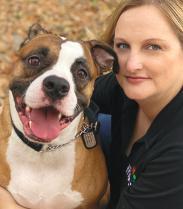
• Growl first, bite last. Communication is key, and while we don’t communicate with barks and bites, the sentiment still stands.
• Daily walks drive out the demons. If you have a high-energy dog, you know that daily exercise is 100 percent non-negotiable. Without that consistent release of anxiety and energy, bad behaviors take over. Again, people aren’t so different.
Perhaps the most important lesson I’ve learned is that of loyalty. Be sure to listen carefully and appreciate all the positivity your pets bring to your life. What is your dog teaching you? HN
22 | CFHN centralfloridahealthnews.com
EDITOR’S DOSE
MEDICAL ADVICE
ABOUT THE AUTHOR: Dr. Joy Jackson, an internal medicine physician, serves the community as director of the Florida department of Health in Polk County (DOH-Polk). For more information about DOH-Polk, visit mypolkhealth.org. Follow DOHPolk on Twitter at twitter.com/FLHealthPolk.




centralfloridahealthnews.com CFHN | 23 Your Lakeside Dermatology Providers… General Dermatology • Mohs Micrographic Surgery • Skin Cancer Screening • Skin Cancer Evaluation and Treatment • Photo Dynamic Therapy (PDT) Cosmetic Dermatology Sebring Location • Botox / Dysport • Fillers • Sculptra • Lip Enhancement • Micro-Needling with PRP Dr. Alex W. Kennen, MD Board Certified Dermatologist & Mohs Surgeon Dr. Michael J. Rogers, MD Board Certified Dermatologist Barbara Ross, ARNP-C Dr. Brooke Rogers, DNP, FNP-C NOW ACCEPTING NEW PATIENTS! www.LakesideDermatology.com 400 Ave, K SE • Suite 3 • WINTER HAVEN (863) 293-SKIN 727 US Hwy 27S • SEBRING (863) 385-7183 H h d N 2019ws-Sun SAVE THE DATE Friday, March 11th 9 a.m. to 2 p.m. International Market World Flea and Farmers Market 1052 US 92 West Auburndale If you would like more information about upcoming events drop us a line at 863-248- 7537 or info@centralfloridamediagroup.com A Central Florida Media Group Event EVENT IS FREE TO THE PUBLIC Central Florida Health Expo is now in its 9th successful year of bringing Health Care Companies and Health Services together with the community. We are a trusted resource to the customers we serve and are evolving to serve and connect during this time. Our Health Expo’s are held at International Market World in Auburndale, Florida. Our upcoming event dates are listed below as well as our exhibitor registration! Express Your Appreciation… NATIONAL NURSES WEEK May 6-12, 2022 Reserve your advertising space today before the deadline passes by calling 863-248-7537 Ext.1.
Trust your hips and knees to the leader in joint replacements.

When you have your hip or knee replacement procedure at a BayCare facility, you’re trusting a leader in Tampa Bay and West Central Florida. No health system or hospital does more hip and knee replacements than BayCare. That level of experience means clinical excellence, which is why 98 percent of our hip and knee replacement patients are up and walking within 24 hours of surgery. For a physician referral: BayCareJointRepair.org or (844) 260-7155

21-1814446-1021






























 by TERESA SCHIFFER sponsored by Central Florida Health Care
by TERESA SCHIFFER sponsored by Central Florida Health Care































































